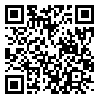BibTeX | RIS | EndNote | Medlars | ProCite | Reference Manager | RefWorks
Send citation to:
URL: http://jsaeh.khu.ac.ir/article-1-2680-en.html
2- Azad University,Najafabad ,
3- - Department of Marine Remote Sensing,Iranian National Institute for Oceanography and Atmospheric Science
Sea surface temperature is one of the most effective physical parameters that affects the health of coral reefs communities.High frequency of the bleaching phenomenon has extensively occurred in the Persian Gulf in the recent years due to the increase in temperature and increased changes in the sea surface temperature (SST) resulting in great mortality in the coral communities. The aim of this research is to determinate a temperature threshold which may function as a warning for the incidence anticipation of this phenomenon. Data on the variation of the SST that has been taken from National Oceanic and Atmospheric Administration (NOAA). Information related to bleaching in the regions of the southern Persian Gulf was extracted from the published papers and reports. Each of these sources also has been extracted for a 35-year statistical course (1980-2015) and by the index of degree heating weeks (DHWs) determined for the same statistical course in this research for the assessment and anticipation of bleaching phenomenon. For reviewing of the work accuracy, Peirce Skill Score (PSS) technique was used to quantify the accuracy of previous and subsequent anticipations. According to the derived results, DHWs threshold for the study region was determined to be 7.13. the threshold 7.13 for DHW is suggested as a caution threshold for bleaching incidence in southern regions of the Persian Gulf that is whenever the values of weekly positive temperature DHW show number 7.13 and higher, there is an expectation of bleaching phenomenon incidence of corals for these regions. And the score of PSS= 0.72 derived from the amounts of H= 7/8= 0.87 for the Hit rate and F= 4/26= 0.15 for the False alarm rate of the bleaching was obtained for the southern regions of Persian Gulf and study region. In northern regions of the Persian Gulf the threshold 5.3 for DHW is suggested as a caution threshold for bleaching incidence. The rate of pss = 0.62 derived from the amounts of (3/4 = 0.75) for the Hit rate and ( 3/23 = 0.13) for the False alarm rate of the bleaching was obtained for the northern regions of Persian Gulf and study region. Difference in DHWs values of the south and north of Persian Gulf shows more resistance of the corals of south Persian Gulf against DHW changes and SST anomalies. Also the amounts of DHW alongside SST can help more completely to the anticipation of bleaching phenomenon.
Received: 2018/03/3 | Accepted: 2018/09/9 | Published: 2018/12/18
| Rights and permissions | |
 | This work is licensed under a Creative Commons Attribution-NonCommercial 4.0 International License. |






